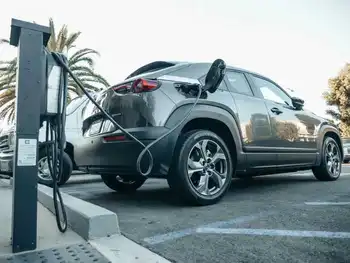Key utility backs out of power plant project
Otter Tail Power Co. is leaving the project that's designed to build the Big Stone II coal plant at Big Stone City in the state's northeast corner.
"It was a combination of factors - the broad economic downturn, a higher level of uncertainty and proposed climate legislation," said Cris Kling, public relations director for Otter Tail.
The Minnesota utility planned to invest $400 million in the project. The economy makes investment too risky, and a cap-and-trade law in Congress adds to the uncertainty for utilities, Kling said.
Otter Tail is operator and majority owner of the Big Stone I coal plant now running in Big Stone City, and that will continue, Kling said. Big Stone II would be adjacent to the first plant and would more than double the output if organizers find a new partner.
Otter Tail was one of five partners in the project. Its chief executive told the other four of Otter Tail's plans in a conference call. The other four remain committed to the project but have a major hole to fill.
"It's definitely a stumbling block that Otter Tail had to pull out, but we're committed to moving forward," said Russell Olson, a spokesman for Heartland Energy in Madison.
Big Stone II still could be up and running by 2015.
"We're still fully permitted. That was the biggest hurdle the last decade. The hardest part is behind us," Olson said.
But continuing depends on a new partner committing to Otter Tail's 120 megawatts.
"We couldn't just divvy that up," Olson said.
Heartland uses 25 megawatts to sell electricity to municipal systems, including Sioux Falls.
Otter Tail's announcement was sour news in Big Stone City, a community of 600. The Saputo Cheese plant, with 250 employees, is the biggest local business, but Big Stone I has 75 workers and a second plant was a promising development.
"I think it's going to be a big blow," Mayor Deb Wiik said. "One man said he feels all the people that had houses up for sale just lost $25,000 without it coming in."
Big Stone I produces 475 megawatts of electricity for regional users. The second plant would produce 550 to 600 megawatts.
"Other interested groups are being given the opportunity to participate in the project. The best-case scenario is they jump on board the next 30 to 90 days and the project stays on track," said Olson, who also is a state senator from Madison.
The coal plant plans have a key application for wind energy. Planners embedded in the Big Stone II project a commitment for a super-highway transmission line to carry 800 to 1,000 megawatts of wind energy. That volume is three times what South Dakota wind farms now produce.
"Thousands of megawatts of projects were looking into tapping into that. It would unlock wind energy in much of eastern South Dakota," said Dusty Johnson, a member of the South Dakota Public Utilities Commission. "If Big Stone II doesn't get built, it's going to be a whole lot more difficult to build those wind farms."
Another casualty would be a cleanup at the existing Big Stone I, which opened in 1975. The Big Stone II plant would have superior pollution control, sharply cutting emissions of mercury and sulfur oxide at both plants, Johnson said.
"If we don't get Big Stone II, we don't get a cleaner Big Stone I," he said.
The four remaining partners are Heartland, Central Minnesota Municipal Power Agency, Missouri River Energy Services in Sioux Falls and Montana Dakota Utilities. They will pick a new leader for the project to replace Otter Tail, Olson said.
Johnson said it's noteworthy that the others are sticking with the project.
"It would have been a convenient time for them all to say they were not going forward," he said. "The fact they're still at the table is some indication that the thing is not dead. That said, it will be difficult without Otter Tail."
Related News

Pennsylvania residents could see electricity prices rise as much as 50 percent this winter
PITTSBURG - Energy costs for electric customers are going up by as much as 50% across Pennsylvania next week, the latest manifestation of across-the-board energy price increases impacting gasoline, heating oil, propane, and natural gas.
Eight Pennsylvania electric utilities are set to increase their energy prices on Dec. 1, reflecting the higher cost to produce electricity. Peco Energy, which serves Philadelphia and its suburbs, will boost its energy charge by 6.4% on Dec. 1, from 6.6 cents per kilowatt hour to about 7 cents per kWh. Energy charges account for about half of a residential bill.
PPL Electric Utilities, the Allentown company…




